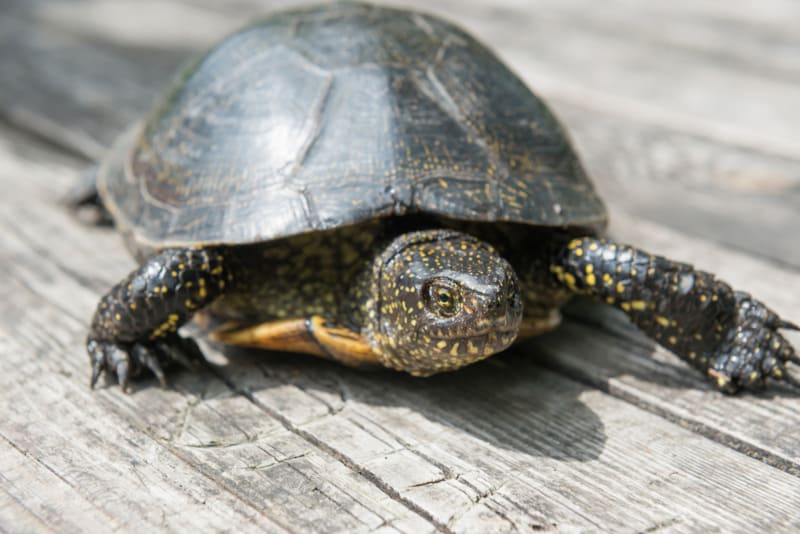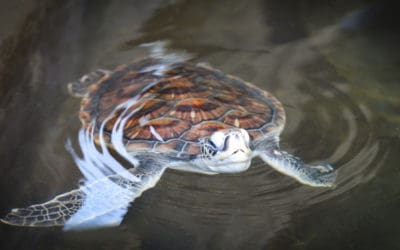Turtles are extraordinary creatures that become more and more popular with every year. A lot of people decide on picking one as their pet and not without a reason. They are not very demanding and at the same time can bring a lot of joy. Obviously, before you decide on picking a turtle as your pet, you should learn more about its anatomy and its habits just to understand its needs and requirements. One of the frequently asked questions that I receive from people is whether turtles have legs. The answer is no, turtles do not have legs. However, they do have limbs and they are ended with flippers.
How different are flippers from legs? What are the benefits of having flippers instead of standard legs as their limbs? There are quite a lot of things that make turtles’ flippers different from, let’s say, tortoises’ legs. And, therefore, I will do my best to explain all the discrepancies. Besides that, I will use this article to show the basics regarding their limbs, the use of them, as well as talk a little about fins and all the reasons why flippers are so vital for the survival of turtles.
First of all, we need to know the basics
First thing to remember is that aquatic, semi-aquatic, and even classic turtles are not similar to tortoises as far as their natural habitat is concerned. You see, turtles are maritime animals and they need to spend most of their time in water. Tortoises, on the other hand, can stay out of water for months provided they have enough moisture and humidity around them and, what is more important, under their body.
Another thing to remember is that having flippers is not a typical thing for reptiles. You see, most reptiles have legs. However, due to evolution, they adapted their limbs to be more agile and useful in the water. As a result, there have been many different reasons why turtles use their legs. Interestingly, they have bones in their limbs. One of the two is the fibula. The limbs themselves are attached to a large set of bones known as the pelvic girdle.
What about fins? Do turtles have them?
A lot of aquatic vertebrates, including fish, have fins. These are thin elements that most often can be found in the body. However, this piece of body element is not found in turtles. And there are more than 350 different species of turtles, so there is a huge likelihood that these reptiles have never developed fins. Simply because there was no need for such a body element.
Usually, fins are used in order to create a lift or thrust, or to provide the ability to steer or stabilize movement when traveling in water. Turtles, on the other hand, do not need fins to do such a thing. You see, while staying underwater, turtles use their flippers as well as webbed feet. Because of that, they can swim quite fast without the use of fins. Interestingly, there is quite a huge resemblance between turtles’ flippers and fish’s fins. Still, we have to remember that these are two different things.
Differences between fins and flippers
Flippers have bone structure that is located beneath their outer layer. Fins, on the other hand, are made solely of cartilage. Therefore, there are no bones or skeletal structures. Interestingly, we can still find cartilage in turtles. However, together with joints and tendons, they make up the outer layer.
If you decide to x-ray the flipper, then you will see how similar it can be to a human’s arm. It looks like a part of the shoulder that goes down to fingers. What is more, flippers are considered to be a modified limb, whereas fins are not considered as such. It is simply an additional body element that helps some vertebrates and a minor group of non vertebrates.
Why do turtles have webbed feet?
All the aquatic animals have webbed feet. It is mainly due to the fact that thanks to that, they are greater at swimming. Imagine having a feet that has all the fingers separated (like humans do). It makes swimming significantly harder, because the amount of force we can get from propelling ourselves is much smaller.
Therefore, webbed feet help aquatic turtles to swim faster. Interestingly, even if they spend more time in the water, it doesn’t mean that webbed feet are not helpful when walking on land. Such feet can surely help them thanks to which there are some freshwater turtles that can forage not only in water, but also on land.

How different are turtles from tortoises as far as their limbs are concerned?
Did you know that there is quite a significant number of differences as far as turtles and tortoises are concerned? One of the biggest differences is the way their shells are shaped. Since turtles need to have their shells more dynamic and more resistant to water pressure, their shells are usually thinner and more streamlined thanks to which they are much better swimmers.
Still, turtles and tortoises differ in many other elements as far as their anatomy is concerned. A great example is their limbs. As it was already established, turtles have flippers. However, contrary to that, tortoises have legs. It is quite a significant difference and such a situation occurs not without a reason.
You see, tortoises spend most of their time on land. The only reason they would go to water is when they are too hot or they need a drink. However, they don’t even have to do that too often simply because they regulate their temperature by hiding in the shadows, lying in wet, even damp soil. Besides that, they can use fresh fruits that are full of water. The two last options are also great to combat thirst in the case of tortoises.
That is why tortoises never needed flippers and their evolution did not change their limbs. Nor did it change their shells to accommodate maritime life. As a result of that, tortoises do have legs, four of them. In the front, they have club-like forelegs. They are much larger than the ones in the back because tortoises use it to get up their body in search of food that is located slightly higher. The ones behind are known as elephantine hind legs.
Furthermore, tortoises have legs that are much larger and much stronger. It is all due to the fact that in most cases these reptiles are heavier and need to use more strength to move forward.
Aquatic turtles and their flippers
Here is a list of all activities for which they use flippers:
Help during foraging
Turtles quite often use their flippers to aid themselves while searching for food. They can use it to support themselves and to pull plants with a large force. They simply use it as levers in order to get plants other animals do not have strength to pull out of their roots.
Help during laying eggs
To make sure the eggs of female turtles are safe, they use flippers to dig a hole. Usually, they are 16 to 20 inches deep. Flippers are of great help during that activity. Later on, they can cover it to protect the eggs from predators.
Assistance while hunting
Flippers can also be used to strike the prey and. Quite simply the strike can stun thanks to which turtles’ limbs are very helpful while hunting down prey. A lot of animals that are usually the victims for turtles can get knocked down with the use of forelimb flippers. Besides that, turtles use flippers to toss their prey into the air. It brings a lot of confusion and allow reptiles to enjoy the meal.
Submit your review | |




